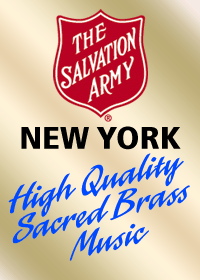2023 National Test Pieces Announced

Kapitol Promotions has announced the five set test-pieces for the Finals of the National Brass Band Championships of Great Britain 2023. The works were chosen by the Kapitol Promotions Music Panel, which is responsible for choosing the set test-pieces for the Regional Championships and National Finals each year. The panel is comprised of Philip Morris (Chairman), Tim Jones (Administrator), with Duncan Beckley, Brian Buckley, Dr Robert Childs, John Maines and Sandy Smith as the panel experts.
The lower section championships will take place in Cheltenham on 16th & 17th September at The Centaur (Cheltenham Racecourse). The Championship section finals will take place at the Royal Albert Hall in London on 21st October.
CHAMPIONSHIP SECTION
‘Of Men and Mountains’ (Edward Gregson)
Published by Novello, distributed by Studio Music
SECTION 1
‘St James’s – A New Beginning’ (Philip Harper)
Published by Harper Music, distributed by Music Shop Europe
(Available from 6 April)
SECTION 2
‘Lakeland Variations’ (Philip Sparke)
Published by Anglo Music, distributed by Music Shop Europe
(Available from 1 May)
SECTION 3
‘The Lost Village of Imber’ (Christopher Bond)
Published by Christopher Bond Music
SECTION 4
‘A Saddleworth Festival Overture’ (Goff Richards)
Published by Studio Music
‘Of Men and Mountains’ was commissioned by The Netherlands Brass Band Championships for its tenth anniversary contest in 1990 and was also set to be used at the National Finals of Great Britain the following year - but at 17 minutes, it was deemed too long. The work is dedicated to the memory of Eric Ball, who Gregson admired greatly and who died shortly before he started the piece. In July the year before the Dutch National commissioned ‘Of Men and Mountains’, Edward Gregson and his wife, Sue, took the Trans Canadian Railway from Toronto to Vancouver. The journey through the Rocky Mountains was the starting point for ‘Of Men and Mountains.’ The 17-minute work brings a slow introduction with embryonic themes and fragmented motives, followed by the first of two fast sections in which main ideas appear. This is dramatic and rhythmic, and followed by the second fast section, scored for separate instrumental groups, in which the previous section’s main ideas are developed. The opening then returns, followed by a long slow section bringing a new theme and solos, after which a gradual and increasingly-paced scherzo reworks material from the first fast section. The majestic culmination of the work, in which the main theme is heard in its final and complete form, precedes a short, fast and triumphant coda on the main theme.
‘St. James’s - A New Beginning’ by Philip Harper is cast in four parts: The Great Fire, Aftermath, Vision and Renaissance. The musical narrative begins with the Great Fire of London raging furiously. The bells ring the alarm and, as the capital city is engulfed by flames, panic and desperation are everywhere. As the fire burns out, we are left to contemplate the aftermath of the inferno: lost lives and countless buildings destroyed. Enter Sir Christopher Wren, the greatest English architect of the time, whose vision and courage were some of the most influential forces in the rebuilding of London, which rose to reclaim its place as one of the great cities of the World. At the heart of the piece is the hymn tune "St. James" by Raphael Courteville (Thou Art the Way), the title of which refers to the St James's Church, Piccadilly, one of the many buildings designed in 1684 and constructed by Wren in London’s renaissance. During the fire, the hymn tune is contorted in agony, then turned into a lament during the aftermath. Wren’s vision takes shape in the form of several obligato-style solos with the hymn tune becoming more and more important. In Renaissance, as the skyline is rebuilt, there are continual optimistic rising lines in every phrase until, finally, the hymn tune is heard in all its glory as the building of the magnificent church is completed and the bells ring again, this time in great celebration. There are many other musical references to the fire in the piece, for example the children’s nursery rhyme, London’s Burning, and at its conclusion, nods to George Frederic Handel and William Blake, two of many eminent people to be linked to St. James’s Church.
‘Lakeland Variations’ was commissioned by the Seeländer Jugend Brass Band to celebrate its 20th Jubilee course, which took place in the summer of 2022, and the première was conducted by Michael Bach. The region of Seeland (Lakeland) lies in the north-west part of Switzerland and is famous for its three lakes: Morat, Neuchâtel and Bienne. Composer Philip Sparke used this as the starting point of Lakeland Variations, which comprises an introduction and five variations based on motif contained in the opening bars. The three lakes are represented by the three notes of the opening timpani solo, the intervals of which, a fourth and a second – together with a cornet figure in bar 4 – form the basis of all the following variations. Variation 1 revolves around an opening cornet solo based on the three timpani notes over a ‘Vinteresque’ accompaniment (the notion of a set of short variations was inspired by the form of Vinter’s Variations on a Ninth). Variation 2 develops the cornet figure in bar 4 of the introduction into a moto perpetuo, again based on the ‘timpani’ intervals, both melodically and harmonically. Variation 3 is a short interlude featuring a euphonium cadenza, which serves as an introduction to Variation 4, a slow movement opening with a cornet solo, again based on the ‘timpani’ intervals. This builds to a full-band climax and subsides to herald Variation 5, which opens with a short fugue, the theme of which is again based on the same intervals. Material from Variation 1 is reintroduced before the cornet solo from Variation 4 reappears majestically, decorated by elements of the fugue. More material from Variation 1 returns to close the work.
‘The Lost Village of Imber’ was commissioned by Bratton Silver Band in 2019 to celebrate the band’s 160th Anniversary and is based on a very real and emotional series of events surrounding the loss of what was once a community. Structured in three movements, it is on this very real story that the work is based, setting out the series of events from 1943 in chronological order. The first movement, ‘On Imber Downe’, portrays a sense of jolity and cohesiveness – a community of individuals living and working together before news of the evacuation had broken. Sounds of the village are heard throughout, not least in a series of percussive effects – the anvil of the blacksmith; the cowbell of the cattle and the bells of the church. The second movement, ‘The Church of St. Giles’, begins mysteriously and this sonorous, atmospheric opening depicts Imber in its desolate state and the apprehension of residents as they learn they have to leave their homes. Amidst this is the church (St Giles Church, Imber), a symbol of hope for villagers who one day wish to return, portrayed with a sweeping melodic passage before the music returns to the apprehension of villagers facing eviction around their sadness at losing their rural way of life. In complete contrast, the third movement, ‘Imemerie Aeternum’, portrays the arrival of the military, complete with the sounds of the ammunition, firing and tanks – sounds that were all too familiar to those living in the surrounding areas. To close, the Church of St. Giles theme returns in a triumphant style, representing the idea that the church has always been, even to this day, a beacon of hope for the villagers and local community – both the centrepiece and pinnacle of a very real story.
‘A Saddleworth Festival Overture’ by Goff Richards features traditional melodies from two different sides of the globe. The English town of Saddleworth nestles on the west side of the Pennines and was originally in the West Riding of Yorkshire before becoming part of the Oldham Metropolitan District (Metropolitan Borough of Oldham), in the heart of the famous Whit Friday marches area. The Australian town of Saddleworth (Saddleworth, South Australia), just north of Adelaide (City of Adelaide), was named after its English counterpart and, when the towns twinned in 1985, Goff Richards was commissioned to write a suitable piece to celebrate the occasion, which explains the combination of Yorkshire melodies, such as “Hail Smiling Morn” and “Pratty Flowers”, alongside “Waltzing Matilda” and “Advance Australia Fair” from ‘down under’. The overture demonstrates Goff’s mastery at weaving disparate and well-known melodies seamlessly into a satisfying whole, which can be enjoyed by both the listener and the musicians performing the music.





.gif)







